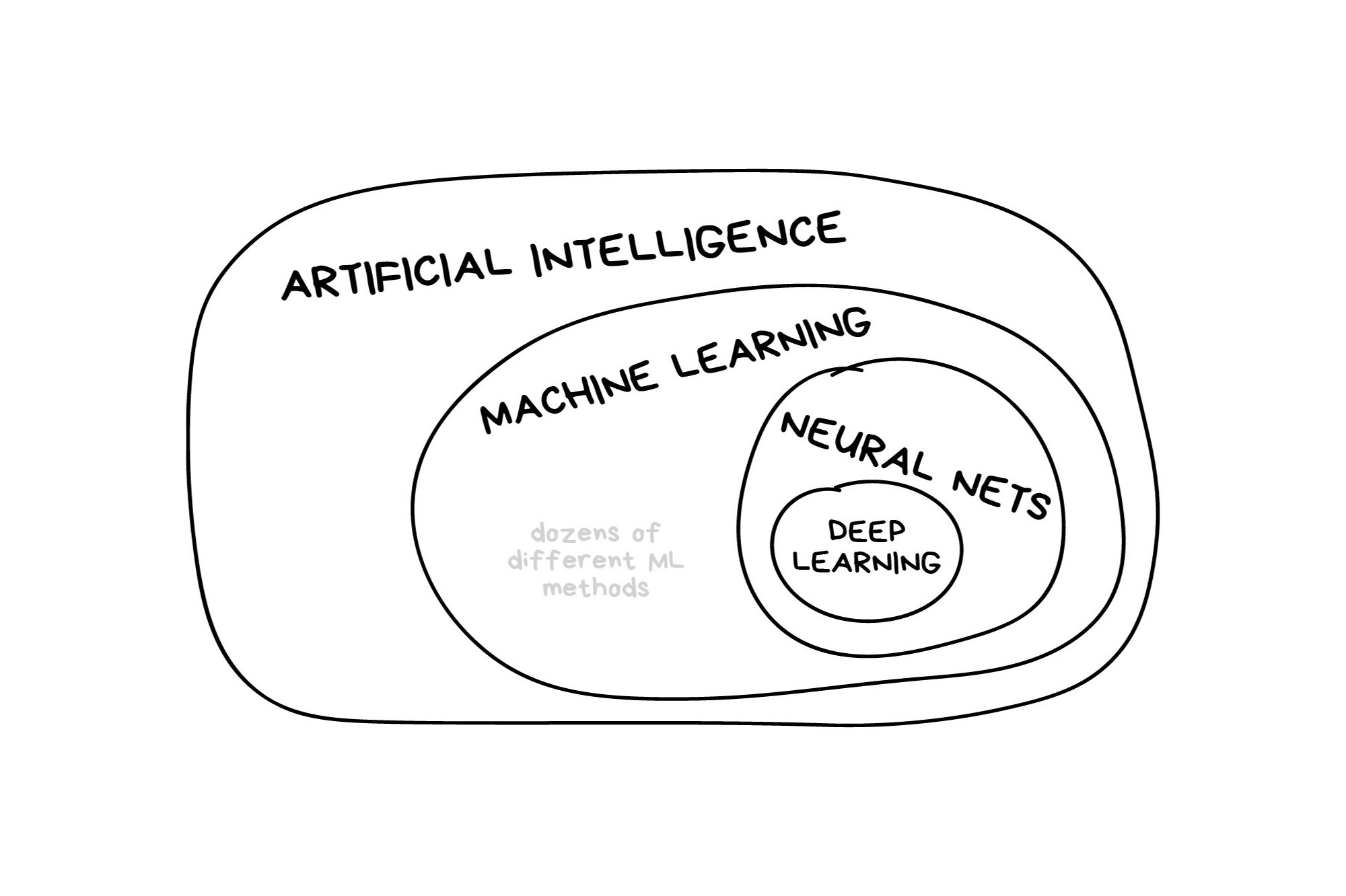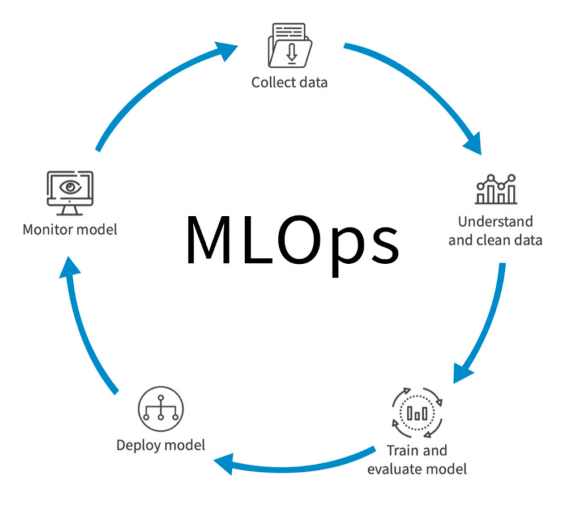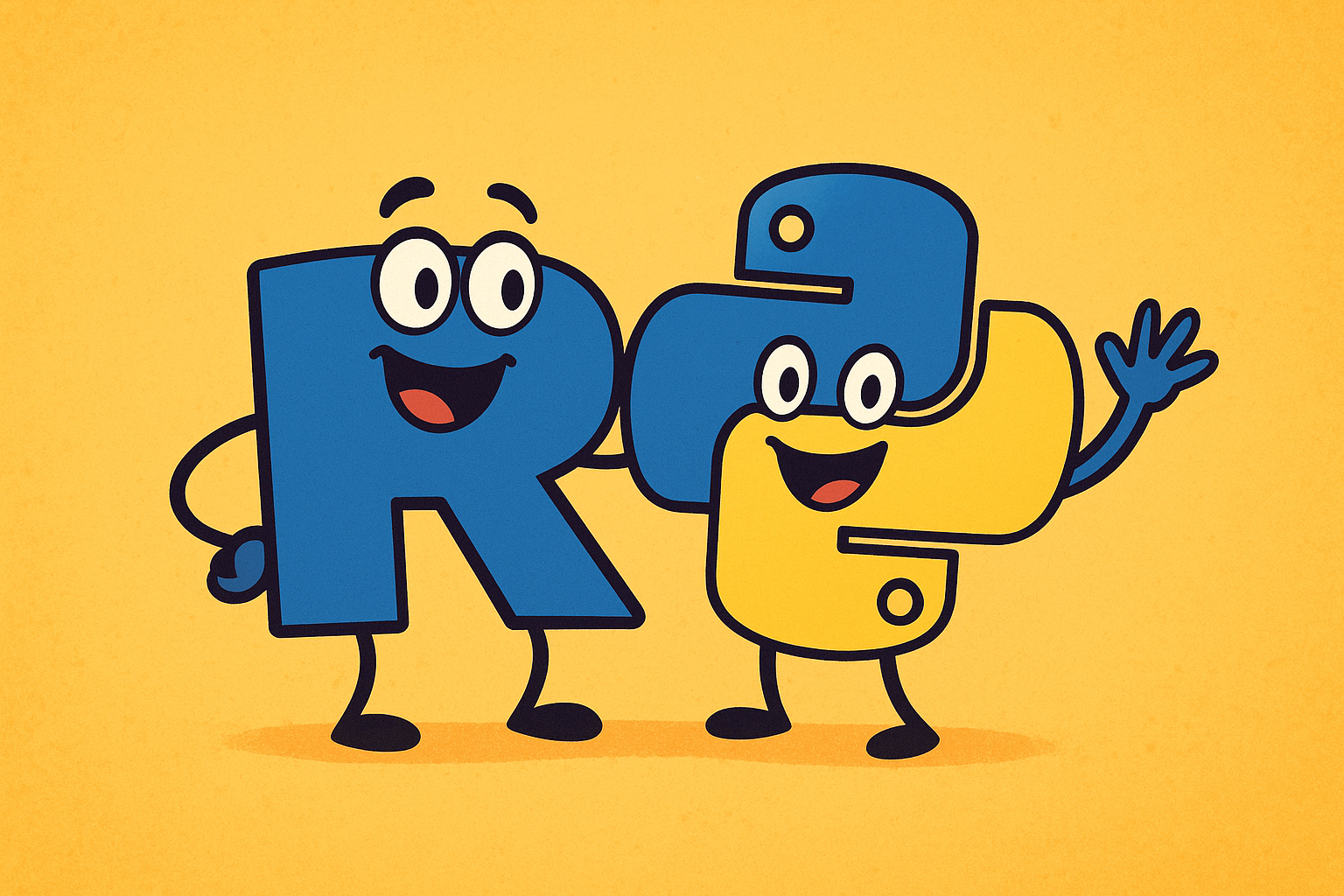Welcome to INFO 4940/5940: Applied Machine Learning
Lecture 1
Cornell University
INFO 4940/5940 - Fall 2025
August 26, 2025
Agenda
Agenda
- Introductions
- What is machine learning?
- Software
- What is INFO 4940?
- This week’s tasks
Learning objectives
- Introduce the course staff
- Define machine learning and how it will be taught in this course
- Review course policies
- Discuss hopes and dreams for the course
Staff intros
Meet the instructor
Dr. Benjamin Soltoff
Associate Teaching Professor in Information Science
284 CIS Building

Meet the course team
TAs
- Afran A.
- Menghan X.
- Haocheng Z.
Meet each other!
Physically interact with at least 2 people sitting around you. Introduce yourselves to each other and share:
- Your name - Prof/Dr. Soltoff
- Your major - Political science
- The last movie you saw - Star Wars: Episode VI – Return of the Jedi
- What you hope to get out of this class - A job?
02:00
What is machine learning?
What is machine learning?

Image credit: xkcd
What is machine learning?

Illustration credit: https://vas3k.com/blog/machine_learning/
Illustration credit: https://vas3k.com/blog/machine_learning/
What is machine learning?
Your turn
What is machine learning to you? How do you seek to use it in this class? Discuss with a neighbor or two.
03:00
The first half of the class
A classic ML workflow







Illustration credit: workshops.tidymodels.org
A better way to think about it

Illustration credit: Posit
How is machine learning used in practice?
The second half of the class
Large Language Models (LLMs)
Large language models (LLMs) are a category of foundation models trained on immense amounts of data making them capable of understanding and generating natural language and other types of content to perform a wide range of tasks.
- Human language (i.e. text)
- Code
- Images
- Audio
- Video
Source: IBM
How LLMs are being used…
How to use LLMs effectively
What will we learn about LLMs?
- How they work
- Use them programmatically
- Use them effectively to solve real-world problems
- Enhance their capabilities
- Build things with them
Software development
How we will do this
R and Python

Generated by ChatGPT
Major differences between R and Python
| R | Python | |
|---|---|---|
| Syntax | Functional language | Object-oriented language |
| Statistical learning | Developed by statisticians for statistical analysis | Meh |
| Machine learning |
|
{scikit-learn} |
| Deep learning |
|
|
| Visualization | {ggplot2} | {matplotlib} + others |
| Package management | CRAN | pip/virtualenv/PyPI/Anaconda/uv |
| Speed | Somewhat slower | Somewhat faster |
| Community | Academia and industry | Larger (general-purpose programming language) |
Course philosophy on programming languages
Who is this class for?
Palmer

- Third-semester MPS in information science student
- Took INFO 5001 last year
- Seeking a career in data science, particularly in financial services or pharmacology
Generated using Microsoft Copilot
Armando

- Fourth-year undergraduate student in information science, concentrating in data science
- Took INFO 3950 (Data Analytics for Information Science) last year
- Wants to learn how to use machine learning models for production, and combine his theoretical knowledge with practical applications
Generated using Microsoft Copilot
Chen

- Born and raised in Shenzhen, China
- Information science major, plans to apply for industry positions
- Completed a summer internship at Dow Chemical and saw the analytics team was using R for predictive modeling
- Wants to learn more about machine learning and how to apply it to real-world problems
Generated using Microsoft Copilot
Course overview
Homepage
https://info4940.infosci.cornell.edu/
- All course materials
- Links to Canvas, GitHub, Posit Workbench, etc.
- Let’s take a tour!
Course toolkit
All linked from the course website:
GitHub organization: github.coecis.cornell.edu/info4940-fa25
Positron
Use the Workbench: posit-workbench.infosci.cornell.edu
🤖 Ezra
Communication: GitHub Discussions
Assignment submission and feedback: Gradescope
Important
Make sure you can access Posit Workbench before class on Thursday.
Activities: Prepare, Participate, Practice, Perform
Prepare: Introduce new content and prepare for class by completing the readings
Participate: Attend and actively participate in class, office hours, and team meetings
Practice: Practice applying ML techniques and computing with application exercises during class, graded for completion
Perform: Put together what you’ve learned to analyze real-world data
- Homework assignments x 6(-ish)
- Two projects
Activities: Participate
Preparing for and participating in class

Not preparing for class, not actively participating

Cadence
- Application exercises: Complete by the end of class
- HWs: Posted Friday morning, due following Wednesday 11:59pm
- Projects: Deadlines throughout the semester, with some class time dedicated to working on them, and most work done outside of class
Grading
| Category | Percentage |
|---|---|
| Projects | 60% |
| Homework | 30% |
| Application Exercises | 10% |
See course syllabus for how the final letter grade will be determined.
15 minute rule
;document.getElementById("tweet-42542").innerHTML = tweet["html"];Support
- Attend office hours
- Ask and answer questions on the discussion forum
- Use Ezra for generative AI assistance with course content
- Reserve email for questions on personal matters and/or grades
- Read the course support page
Diversity + inclusion
- I want you to feel like you belong in this class and are respected
- We are committed to full inclusion in education for all persons
- If you feel that we have failed these goals, please either let us know or report it, and we will address the issue
Accessibility
I want this course to be accessible to students with all abilities. Please feel free to let me know if there are circumstances affecting your ability to participate in class.
Course policies
Late work, waivers, regrades policy
- We have policies!
- Read about them on the course syllabus and refer back to them when you need it
Collaboration policy
Only work that is clearly assigned as team work should be completed collaboratively.
Homeworks must be completed individually. You may not directly share answers / code with others, however you are welcome to discuss the problems in general and ask for advice.
Sharing / reusing code policy
We are aware that a huge volume of code is available on the web, and many tasks may have solutions posted
Any recycled code that is discovered and is not explicitly cited will be treated as plagiarism, regardless of source
All code must be written by you, the human being
Generative AI
Use generative AI to facilitate, rather than hinder, learning
✅ GAI tools for reference purposes
🤔 GAI tools for writing my code/analysis
❌ GAI tools for narrative
You are ultimately responsible for the work you turn in; it should reflect your understanding of the course content
Academic integrity
- A student shall in no way misrepresent his or her work.
- A student shall in no way fraudulently or unfairly advance his or her academic position.
- A student shall refuse to be a party to another student’s failure to maintain academic integrity.
- A student shall not in any other manner violate the principle of academic integrity.
Source: Code of Academic Integrity
Most importantly!
Ask if you’re not sure if something violates a policy!
Application exercise
Application exercise
- What do you hope to learn from this class?
- Based on the syllabus and current list of topics, what are you most excited about doing in this course?
- What are you most concerned about doing in this course?
- What do you think is currently missing from the class that should be added (e.g. topics, assignments, techniques)? Are there certain things you want reduced and/or eliminated to make additional space for other topics?
Discuss with your peers, then submit your individual responses.
08:00
Wrap-up
Before Thursday
- Complete your preparation activities
